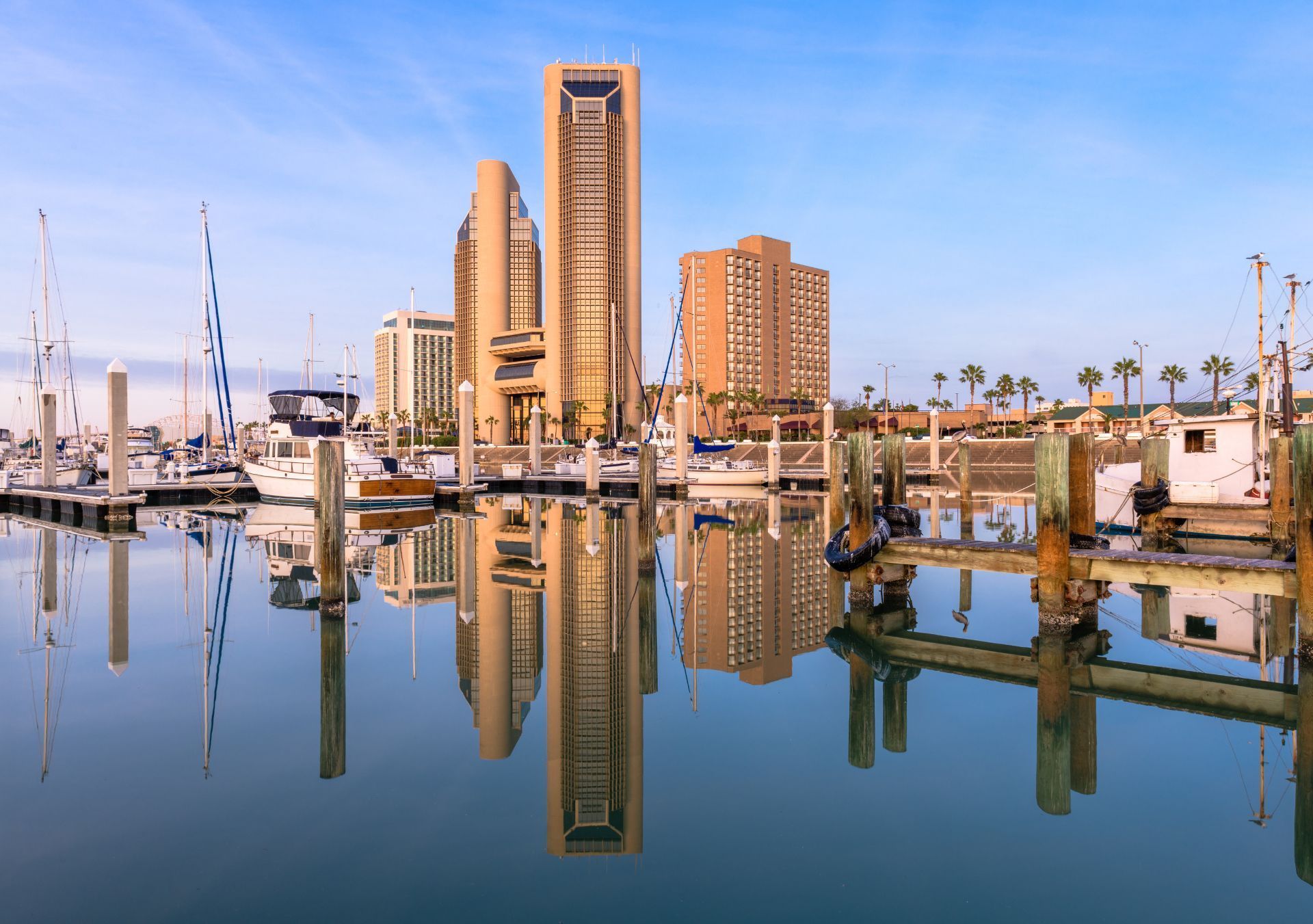
Most Common Business Policies
Index
Understanding Inland Marine Insurance
The Importance of Inland Marine Insurance in Arizona
Types of Inland Marine Insurance Policies
Benefits of Inland Marine Insurance
Factors to Consider When Choosing Inland Marine Insurance
Common Misconceptions About Inland Marine Insurance
Contact Us
Inland marine insurance is a specialized form of coverage that protects property in transit or property that is movable in nature. While the term may seem confusing, it encompasses a wide array of items, from construction equipment to fine art. In Arizona, where industries such as construction, agriculture, and transportation flourish, understanding inland marine insurance is crucial for businesses and individuals alike. This article delves into the essentials of Arizona inland marine insurance, its types, benefits, and considerations for securing the right coverage.
Understanding Inland Marine Insurance
Inland marine insurance is often misunderstood due to its name. Originally, it referred to goods transported over water, but it has evolved to cover various types of movable property. This insurance is particularly relevant for businesses that deal with items that are not fixed to a location. The term "marine" is a historical remnant, as the coverage was initially designed for cargo traveling across rivers and lakes, but today it encompasses a wide array of items that can be transported over land.
What Does Inland Marine Insurance Cover?
Inland marine insurance can cover a broad spectrum of items. Common coverages include:
- Construction equipment and tools
- Mobile machinery
- Fine art and collectibles
- Goods in transit
- Inventory stored at off-site locations
Each policy can be tailored to meet specific needs, ensuring that businesses are protected against various risks associated with their movable property. For instance, a construction company may require coverage for tools left on job sites, while an art gallery might need protection for pieces that are transported for exhibitions. Additionally, many policies can include coverage for theft, accidental damage, and even loss due to natural disasters, making them a vital part of risk management for many businesses.
Who Needs Inland Marine Insurance?
Businesses in several sectors may benefit from inland marine insurance. These include:
- Construction companies that transport heavy machinery and tools
- Art galleries and museums that exhibit valuable artworks
- Retail businesses that ship goods to customers
- Event planners who manage equipment for events
Individuals who own valuable collectibles or equipment may also find this insurance beneficial. The flexibility of inland marine insurance makes it suitable for a diverse range of clients. For example, photographers who carry expensive camera equipment to various locations can safeguard their gear against potential damage or theft. Similarly, musicians who travel with high-value instruments can ensure they are protected during transit, providing peace of mind while they focus on their craft. As industries continue to evolve and more businesses operate in mobile capacities, the relevance of inland marine insurance is likely to grow, adapting to the needs of a dynamic marketplace.

The Importance of Inland Marine Insurance in Arizona
Arizona's unique geographical and economic landscape makes inland marine insurance particularly important. With a growing population and a booming economy, the demand for construction and transportation services continues to rise. This creates a need for robust insurance solutions to protect businesses and individuals. The state's diverse industries, ranging from agriculture to technology, further underscore the necessity of specialized insurance products that can adapt to the specific risks associated with each sector.
Protecting Valuable Assets
Inland marine insurance provides essential protection for valuable assets that are frequently moved or transported. For instance, construction companies often rely on expensive machinery that can be damaged or stolen during transit. By securing inland marine coverage, these businesses can mitigate financial losses and ensure operational continuity. Additionally, companies involved in shipping goods across the state, whether by truck or rail, face unique challenges such as theft, damage from accidents, or natural disasters. Inland marine insurance not only covers these risks but also extends to specialized equipment like cranes and scaffolding, which are vital for successful project completion.
Regulatory Considerations
In Arizona, businesses must comply with various regulations that may affect their insurance needs. Understanding local laws and requirements is crucial for selecting the right coverage. Inland marine insurance can help businesses meet these regulatory requirements while safeguarding their assets. Furthermore, as the state continues to evolve with new infrastructure projects and urban development, staying informed about changing regulations becomes even more critical. Companies that proactively address these legal considerations through comprehensive insurance solutions can avoid costly penalties and ensure they remain competitive in a rapidly changing market.
Moreover, the interplay between inland marine insurance and other types of coverage, such as
general liability and
commercial auto insurance, can create a more holistic risk management strategy. By integrating these policies, businesses can ensure that they are not only compliant but also fully protected against a wide array of potential liabilities. This layered approach to insurance helps businesses in Arizona navigate the complexities of their operations while providing peace of mind that their investments are secure, no matter where they are located or how they are transported.
Types of Inland Marine Insurance Policies
Inland marine insurance policies come in various forms, each designed to address specific needs. Understanding these types can help businesses make informed decisions about their coverage.
Specific Coverage Policies
These policies provide coverage for specific items or categories of property. For example, a policy may cover only construction equipment or fine art. This type of policy is ideal for businesses that have particular assets that require dedicated protection. By focusing on specific items, these policies can often offer tailored coverage that addresses unique risks associated with those assets, such as theft, damage, or loss during transit.
Moreover, specific coverage policies can be crucial for industries where certain items have significantly higher values or risks. For instance, a gallery showcasing expensive artwork may opt for a specific coverage policy to ensure that each piece is adequately insured against potential hazards, providing peace of mind to both the gallery owner and the artists involved.
Blanket Coverage Policies
Blanket coverage policies offer a broader range of protection, covering multiple items under a single limit. This type of policy is beneficial for businesses with diverse movable assets, as it simplifies the insurance process and often provides more comprehensive coverage. Companies that deal with a wide array of equipment, such as rental services or logistics firms, find blanket policies particularly advantageous, as they can manage their risks without needing to itemize every asset.
Additionally, blanket coverage policies can adapt to changing inventory levels, which is especially useful for businesses that frequently acquire new assets or rotate their inventory. This flexibility means that as businesses grow and evolve, their insurance can adjust accordingly, ensuring that they are always adequately protected without the hassle of constantly updating their policy details.
Installation Floater Policies
Installation floater policies are designed for businesses involved in installation projects. These policies cover property that is in transit to a job site and may also provide coverage while the property is being installed. This is particularly useful for contractors and builders who need to protect their equipment and materials throughout the project lifecycle. By covering both transportation and installation phases, these policies mitigate the risks associated with potential damages or losses that could occur during these critical stages.
Furthermore, installation floater policies can also include coverage for tools and equipment that are used on-site, ensuring that contractors are protected against theft or damage while working on a project. This comprehensive approach allows businesses to focus on their work without the constant worry of unforeseen incidents that could impact their operations and financial stability. In a field where delays can lead to significant cost overruns, having the right insurance coverage is essential for maintaining project timelines and budgets.
Benefits of Inland Marine Insurance
Inland marine insurance offers numerous benefits that can significantly impact a business's bottom line. Understanding these advantages can help businesses recognize the value of this type of coverage.
Comprehensive Coverage
One of the primary benefits of inland marine insurance is its comprehensive coverage. It protects against various risks, including theft, damage, and loss during transit. This ensures that businesses can recover financially from unforeseen events, allowing them to focus on their operations without the constant worry of potential losses. Additionally, this type of insurance often covers equipment and goods that are not typically included in standard property insurance policies, making it a crucial component for businesses that rely on transporting goods or using specialized equipment on job sites.
Flexibility and Customization
Inland marine insurance policies can be tailored to meet the unique needs of each business. This flexibility allows companies to select coverage limits, deductibles, and specific items to insure, ensuring that they only pay for the coverage they need. For instance, a construction company may opt to insure specific machinery and tools that are frequently moved between job sites, while a retailer might focus on coverage for inventory in transit. This level of customization not only helps in managing costs but also ensures that the policy aligns perfectly with the operational risks faced by the business.
Peace of Mind
Knowing that valuable assets are protected provides peace of mind for business owners. This assurance allows them to concentrate on growth and development rather than constantly worrying about potential losses. With the right inland marine insurance, businesses can operate with confidence. Furthermore, many insurers offer risk management resources and support, helping businesses to implement best practices for safeguarding their assets. This proactive approach not only enhances security but can also lead to lower premiums over time, as businesses demonstrate their commitment to minimizing risks.
Enhanced Business Relationships
Inland marine insurance can also play a pivotal role in strengthening relationships with clients and suppliers. When businesses can assure their partners that they are adequately covered against potential losses, it fosters trust and reliability. For example, a logistics company that can demonstrate comprehensive inland marine coverage may find it easier to secure contracts with larger clients who prioritize risk management. This not only enhances the company’s reputation but can also lead to increased opportunities for collaboration and growth in competitive markets.
Support for Specialized Industries
Moreover, inland marine insurance is particularly beneficial for specialized industries such as construction, transportation, and technology. These sectors often face unique challenges related to the movement and storage of valuable equipment and materials. For instance, a technology firm that frequently transports sensitive electronic devices can tailor its inland marine policy to cover specific risks associated with damage during transit or installation. This specialized coverage ensures that businesses in these industries are not left vulnerable to the financial repercussions of unexpected incidents, thereby promoting stability and sustainability in their operations.

Factors to Consider When Choosing Inland Marine Insurance
Selecting the right inland marine insurance requires careful consideration of several factors. Understanding these elements can help businesses make informed choices that align with their needs.
Assessing Your Assets
Before purchasing inland marine insurance, businesses should conduct a thorough assessment of their assets. This includes identifying valuable items, evaluating their worth, and understanding how often they are transported. A comprehensive asset assessment will help determine the appropriate coverage levels. Additionally, businesses should consider the nature of the goods being transported. For instance, high-value items like artwork or electronics may require specialized coverage due to their susceptibility to damage or theft. Understanding the specific risks associated with different types of assets can further refine the insurance strategy.
Understanding Policy Limits and Deductibles
Policy limits and deductibles are critical components of any insurance policy. Businesses should carefully evaluate their options to ensure they select limits that adequately cover their assets while also considering how much they can afford to pay out-of-pocket in the event of a claim. It's also important to review the terms of the policy regarding partial losses, as some policies may have different deductibles for various types of claims. This understanding can prevent unexpected financial burdens and ensure that businesses are fully prepared for any potential losses that may arise during transportation.
Working with an Insurance Professional
Partnering with an experienced insurance professional can provide valuable insights into the complexities of inland marine insurance. These experts can help businesses navigate the various policy options, ensuring they select coverage that meets their specific needs and complies with Arizona regulations. Furthermore, an insurance professional can assist in identifying any gaps in coverage that might leave a business vulnerable. They can also provide guidance on risk management strategies, helping businesses implement practices that minimize potential losses, such as proper handling and secure packaging of goods during transit. This proactive approach not only enhances protection but can also lead to lower premiums over time.
Common Misconceptions About Inland Marine Insurance
Despite its importance, several misconceptions about inland marine insurance can lead to confusion. Addressing these myths can help businesses better understand their insurance needs.
It Only Covers Marine Transport
One of the most common misconceptions is that inland marine insurance is limited to goods transported over water. In reality, it covers a wide range of movable property, regardless of the mode of transport. This includes items transported by truck, rail, or even air.
It’s Only for Large Businesses
Another misconception is that inland marine insurance is only necessary for large businesses with significant assets. In truth, small businesses and individuals with valuable items can also benefit from this type of coverage. The flexibility of inland marine insurance makes it accessible to a wide range of clients.
How to File a Claim for Inland Marine Insurance
Filing a claim for inland marine insurance can be a straightforward process if businesses understand the necessary steps. Knowing how to navigate this process can ensure that claims are handled efficiently.
Document the Loss
The first step in filing a claim is to document the loss or damage thoroughly. This includes taking photographs, gathering receipts, and creating a detailed inventory of the affected items. Comprehensive documentation will support the claim and help expedite the process.
Notify Your Insurance Provider
Once the loss has been documented, the next step is to notify the insurance provider. Most policies require prompt notification, so it’s essential to act quickly. Provide the insurer with all relevant information, including policy details and documentation of the loss.
Follow Up on the Claim
After filing the claim, it’s important to follow up regularly with the insurance provider. This ensures that the claim is being processed and allows for any additional information or documentation to be submitted as needed. Maintaining open communication can help expedite the resolution of the claim.
Conclusion
Inland marine insurance is a vital component of risk management for businesses and individuals in Arizona. With its ability to protect valuable movable assets, it provides peace of mind and financial security in an ever-changing environment. Understanding the types of coverage available, the benefits it offers, and the factors to consider when selecting a policy can empower businesses to make informed decisions that align with their unique needs.
As industries continue to evolve and the demand for transportation and construction services grows, the importance of inland marine insurance will only increase. By securing the right coverage, businesses can safeguard their assets and focus on growth, knowing they are protected against unforeseen risks.
